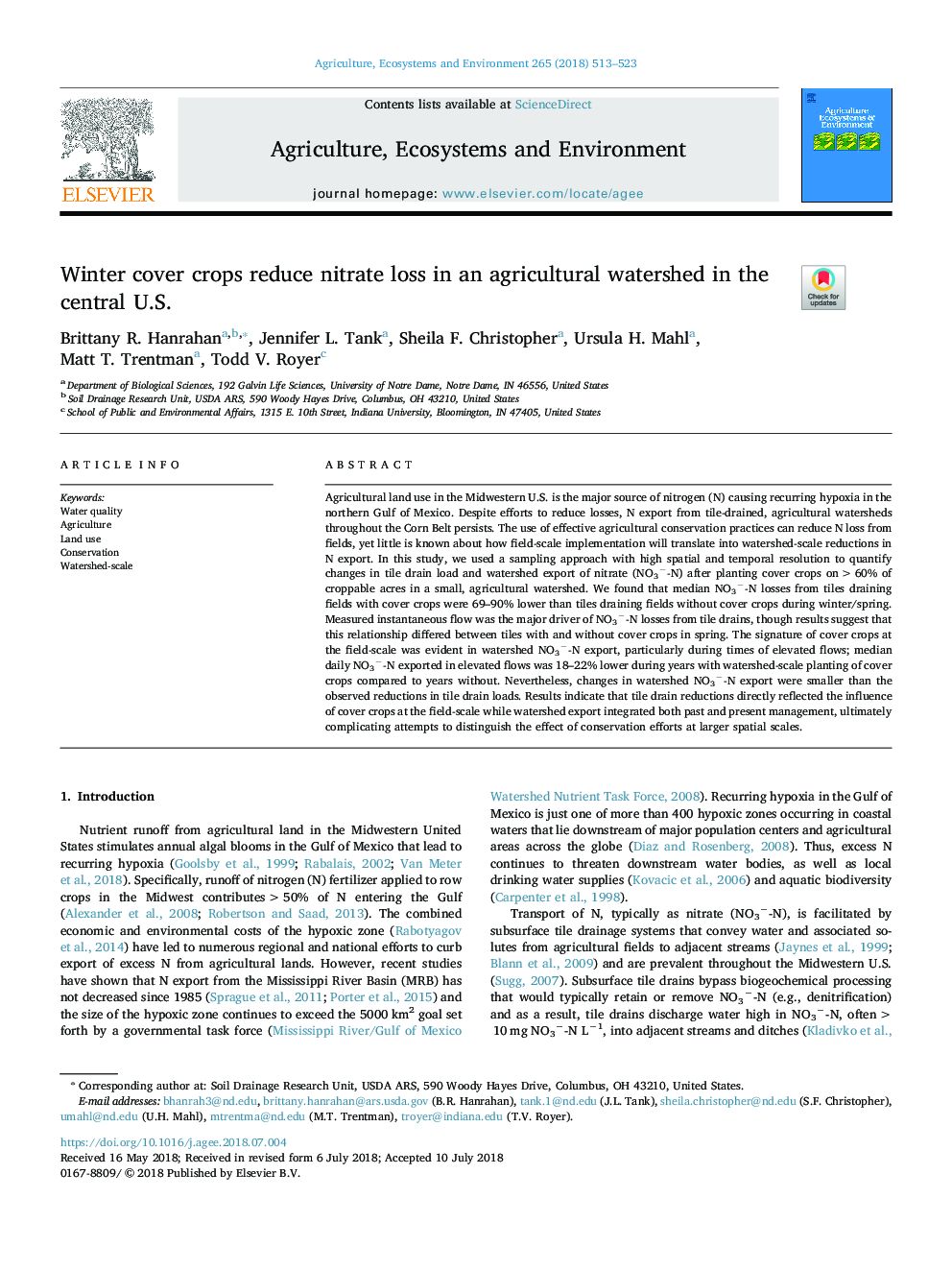| Article ID | Journal | Published Year | Pages | File Type |
|---|---|---|---|---|
| 8487007 | Agriculture, Ecosystems & Environment | 2018 | 11 Pages |
Abstract
Agricultural land use in the Midwestern U.S. is the major source of nitrogen (N) causing recurring hypoxia in the northern Gulf of Mexico. Despite efforts to reduce losses, N export from tile-drained, agricultural watersheds throughout the Corn Belt persists. The use of effective agricultural conservation practices can reduce N loss from fields, yet little is known about how field-scale implementation will translate into watershed-scale reductions in N export. In this study, we used a sampling approach with high spatial and temporal resolution to quantify changes in tile drain load and watershed export of nitrate (NO3â-N) after planting cover crops on >60% of croppable acres in a small, agricultural watershed. We found that median NO3â-N losses from tiles draining fields with cover crops were 69-90% lower than tiles draining fields without cover crops during winter/spring. Measured instantaneous flow was the major driver of NO3â-N losses from tile drains, though results suggest that this relationship differed between tiles with and without cover crops in spring. The signature of cover crops at the field-scale was evident in watershed NO3â-N export, particularly during times of elevated flows; median daily NO3â-N exported in elevated flows was 18-22% lower during years with watershed-scale planting of cover crops compared to years without. Nevertheless, changes in watershed NO3â-N export were smaller than the observed reductions in tile drain loads. Results indicate that tile drain reductions directly reflected the influence of cover crops at the field-scale while watershed export integrated both past and present management, ultimately complicating attempts to distinguish the effect of conservation efforts at larger spatial scales.
Related Topics
Life Sciences
Agricultural and Biological Sciences
Agronomy and Crop Science
Authors
Brittany R. Hanrahan, Jennifer L. Tank, Sheila F. Christopher, Ursula H. Mahl, Matt T. Trentman, Todd V. Royer,
